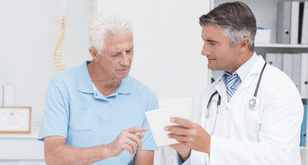
Chronic prostatitis is an inflammatory disease characterized by prostate lesions and severe urodynamic diseases. One of the causes of chronic inflammation of the prostate is improper or untimely treatment in the acute phase. When the peeling and hyperplasia of glandular epithelium is reversible, it can be successfully corrected by drugs within 2-3 weeks.
The treatment of chronic prostatitis includes large-scale antibiotic treatment aimed at eliminating infectious pathogens, a series of measures to increase the body's immune resistance, physical therapy methods and heat therapy. Psychological correction can also be included in the treatment plan, because neurasthenia and neurosis-like conditions are often observed in men with long-term and recurrent prostatitis.
Why does inflammation become a chronic disease?
Knowing the causes of chronic inflammation of the prostate is necessary to prevent aggravation and improve the quality of life of patients. There are many factors that can affect the functional state of the prostate gland (glandular) tissue and cause its inflammation, which is based on the peeling and proliferation of epithelial cells.
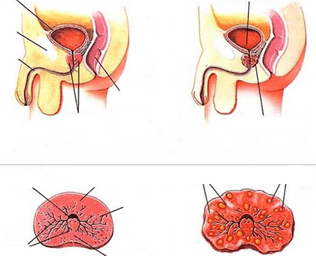
It should also be kept in mind that for the development of chronic aseptic prostatitis, a single acute urinary tract infection is sufficient. Therefore, personal hygiene, use of condoms during sexual intercourse, and timely treatment of urinary tract diseases are important for preventing menThis disease is very important. Medicine knows that in chronic sinusitis, tonsillitis and other diseases that cause the active growth of pathogenic bacteria, the blood-borne (through systemic circulation) infection of the prostate, therefore, the rehabilitation of chronically infected lesions is important for the complex treatment of long-term or persistent inflammation of the prostate. stage.
The negative factors that may exacerbate prostatitis (including non-infectious course) are:
- Urinary tract injury and surgical operation of genitourinary system organs;
- Normal or severe hypothermia of the pelvic organs (swimming in open water, working in refrigerators and freezers, etc. when the water is not fully heated or when the outdoor weather is cool); Sedentary and men’s lack of physical activity caused by
- lack of motivation (a sedentary lifestyle is one of the main factors in the development of chronic cognitive prostatitis);
- Bad habits, in which the absorption of the most important macro and trace elements (zinc, chromium, selenium, manganese) that determine the chemical composition and rheological properties of prostate secretions will slow or weaken;
- Diseases in the intimate field (frequent masturbation, irregular sexual relations, long-term abstinence, frequent awakening that does not end with sexual intercourse);
- Overweight;
- Eating disorders (increased intake of spicy, salty, smoky and high-fat foods).
Attention! The urologist pointed out that the main pathogenic factor in the development of chronic inflammation of the prostate is posterior urethritis. It should also be pointed out that men’s lymphadenitis develops inflammatory changes in the first few months after infection with gonorrhea.
Treating chronic prostatitis with drugs
The treatment of chronic prostatitis with drugs is only aimed at suppressing the acute symptoms during the exacerbation and destruction of the infection, but the drugs cannot be used as the sole means (according to Dr. Pechersky, the effectiveness of this treatment will not exceed 36%).
The following table lists a complete drug treatment plan for long-term or recurrent prostatitis, which is currently used as a standard for uncomplicated diseases.table. A preparation for the comprehensive treatment of chronic prostatitis.
| Pharmacology Group | Purpose |
|---|---|
| Macrolides, semi-synthetic penicillins and third-generation cephalosporins antibiotics have a wide range of antibacterial activities. | eradicate (destroy) pathogenic bacteria-infectious prostatitis, urethritis, cystitis and other pathogens of urinary tract infections. |
| Antibacterial agents and antiprotozoal agents. | Treatment of infections caused by pathogenic microorganisms and protozoa. |
| Non-steroidal anti-inflammatory drugs (preferably in the form of rectal suppositories). | Reduce inflammation of prostate tissue, relieve pain in the perineum, hip space, ac bone and groin. |
| Preservative in the form of rectal suppositories. | Repair of rectal mucosa and prevention of long-term prostatitis. |
| Alpha blocker. | Normal urination, restore daily urine output. |
| Microcirculation corrector. | Eliminate the congestion of small pelvic blood vessels and restore normal blood and lymph. |
| Urodynamic corrector (drug that affects prostate tissue metabolism). | Improve metabolism and metabolic processes and nutrition in prostate tissue. |
| Potency modifier. | Comprehensive treatment of erectile dysfunction, improve the chemical composition, viscosity and fluidity of semen, and improve sperm activity (for patients with prostatitis and autoimmune infertility, this group of drugs is recommended). |
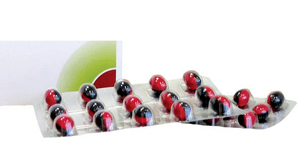
The duration of antibiotic treatment is at least 4-6 weeks. In any case, do not take antibacterial drugs without a doctor's prescription, because the main factor in choosing the treatment is the results of microscopic examination of prostate secretions and the spontaneous release of fluid produced by prostate massage. Some antibiotics, such as penicillin (combination of amoxicillin and clavulanic acid) are reserved drugs, and their incorrect use will not only lead to a lack of clinically significant effects and pathological progress, but also lead to the development of super infections.
Important! In some cases, men with chronic prostatitis require psychological correction, especially if the pain syndrome is combined with behavioral changes, anxiety, irritability, and neurasthenia. Antidepressants with selective serotonin reuptake inhibitory effects can be used to suppress these symptoms.
Physical Therapy
Heat therapy is the main method of treating chronic prostatitis in the exacerbation phase (after the acute symptoms subsided). Heat therapy refers to the method of physical therapy, which is the quantitative effect of heat on the affected area. The benefits of hyperthermia are that blood circulation is normal, inflammation is reduced, and chronic pelvic pain is relieved. This is one of the main clinical manifestations of chronic prostatitis and reduces the quality of life of men. Heat also improves the penetration of drugs into prostate tissue, so in some cases, physical therapy can be used to increase the effectiveness of drug therapy (for example, electrophoresis with antibiotics). For men at high risk of thrombosis, preventive heating is recommended due to the moderate absorption of heat.
There are many ways to produce thermal effects on the human body. The doctor should choose a specific treatment method according to the clinical situation, the form and stage of the disease, the age of the man and his personal tolerance. The most effective way to treat prostatitis is:

- Thermal application with minerals (analcime, paraffin, heavy iron ore), salt or sand;
- Electric heating pad;
- Deep heating of high-strength tissues to directly act on blood vessels and nerve endings (diathermy);
- Exposure to high-frequency alternating magnetic fields can eliminate pain, relieve inflammation and eliminate neurosis-like manifestations (induction therapy);
- Ultrasound therapy (promotes the absorption of abscesses and the healing of scars formed);
- Electrophoresis, introduce electrodes into the rectum;
- Exposure to prostate tissue (darsonvalization) by high-frequency pulse current.
In some physical therapy rooms, chronic inflammation of prostatitis can be treated with hot mud ("mud pants"). Such procedures not only have a positive effect on blood and lymph circulation, but also have a positive effect on the production of prostate secretions and the tissue nutrition of inflamed organs. In some cases, the mud will be injected directly into the rectum in the form of a tampon, because this method of administration can quickly achieve the therapeutic effect and produce a positive response to the treatment.
Other treatment methods
In addition to medicine and heat therapy, the comprehensive treatment plan is supplemented by various procedures prescribed by the doctor according to the characteristics of the doctor's condition.
Prostate massage
This is one of the main methods to treat chronic inflammation of the prostate, and it is recommended to be used in almost 90% of cases (in the absence of contraindications). Massage is a finger action on the prostate, the purpose is to stimulate the outflow of secretions. The duration of this process is usually about 1-2 minutes. The standard for achieving sufficient results is to completely empty the prostate and the patient will feel relief (the doctor should be informed).
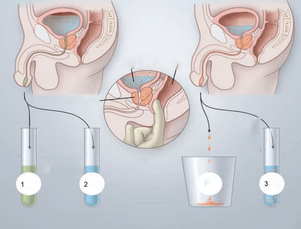
The benefits of massage depend on the therapeutic effect that can be obtained after a course of treatment (8 to 12 steps). Through simple lessons, these are:
- Normalization of muscle tone;
- Restore unobstructed secretion;
- The flow of blood and lymph from the prostate is normalized (especially important in cognitive prostatitis).
This procedure is contraindicated in the acute phase because it carries the risk of spreading infection to surrounding tissues and organs (blood-borne infection), as well as other infectious diseases of the genitourinary system, the presence of cysts or stones in the prostate. For patients diagnosed with tuberculous organ damage, adenoma or other neoplastic diseases (including prostate cancerous lesions), prostate massage should not be performed. If there is rectal disease (hemorrhoids, anal fissure, proctitis, paracolitis), massage can cause complications and cause the underlying disease to recur.
Important! Studies have shown that almost 42% of men refuse to receive prostate massage due to increased psychological discomfort related to the particularity of the operation. The physician’s work for such patients should include detailed information on the consequences of refusal of treatment and possible complications (especially infertility and persistent sexual dysfunction). In some cases, it is recommended to prescribe mild sedatives a few days before starting treatment.
Hot enema
Hot enema is a home remedy for chronic prostatitis, but urologists recognize their effectiveness and advise them to treat prostatitis faster and more effectively. The water temperature for these enemas should be around 42°C. Before surgery, it is necessary to clean the intestines with a conventional enema or laxative. The volume of an enema is 150 to 300 ml. It is recommended to empty the intestine within 30 to 50 minutes after administration of the solution.
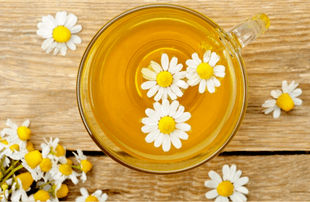
The prescriptions for chronic prostatitis are listed below.
- Dissolve 10 drops of iodine and about 20 ml of chlorhexidine in 200 ml of water. Apply for 15 days at bedtime.
- A decoction (about 250 ml) of chamomile, St. John's wort or calendula should be introduced into the rectum and left for 1 hour. Repeat this process once a day for 2 weeks.
- Heat sea buckthorn oil (40-50 ml) to 40°C and introduce it into the rectum for 20-30 minutes. The course of treatment is 10-15 days. This procedure is best done before going to bed.
- If severe pain syndrome occurs, which severely limits the patient's mobility and impairs his quality of life, you can use a microcell lysate containing nocaine. Dissolve 2 ampoules of 2% novocaine solution in 180 ml of chamomile steep soup. Keep it for at least 50 minutes. Repeat every day for 1 week.
Antimicrobial drugs, anti-inflammatory drugs, and antibiotics can also be used for microenemas. With the doctor’s permission, the use of these drugs in strict accordance with the indicated doses is allowed.
Treatment of chronic prostatitis: step-by-step instructions
Various treatments are not enough to completely get rid of chronic prostatitis. If a person does not pay attention to diet and does not change their lifestyle, the disease will occur regularly, leading to irreversible changes in the structure and functional activities of the prostate, and continuing to cause dysuria and sexual dysfunction. In order to make the treatment more effective and longer, for patients with chronic prostatitis, you should follow the recommendations in the following instructions.

- Step 1. If a person is diagnosed with chronic prostatitis, he should start with correcting his diet. It is necessary to exclude foods that contain a lot of fat, salt and spices from the menu. Fat increases blood cholesterol levels, while salt promotes fluid retention and edema in prostate tissue. Spices (such as various chemical additives) stimulate the urethral mucosa and exacerbate existing symptoms.
- Step 2. Since alcoholic beverages slow down nutrient absorption, disrupt blood and lymph circulation and negatively affect the metabolism of the prostate, alcoholic beverages must be completely eliminated. If a person suffers from tobacco addiction, measures should be taken to get rid of this habit (the toxic substances in tobacco smoke violate the viscosity and fluidity of prostate secretions and change its chemical composition).
- Step 3. Overweight men should consider the identified deviations and consult an endocrinologist and nutritionist to fully diagnose and correct their weight. Obesity is the most important factor in the development of chronic prostatitis, and an important stage of complex treatment is weight loss in patients with high BMI.
- Step 4. In order to eliminate the congestion associated with insufficient motivation, it is necessary to provide appropriate levels of physical activity corresponding to age and physical health. Swimming, physical therapy exercises, stretching exercises, and walking are useful for prostatitis.
- Step 5. For the normal function of the prostate, it is necessary to monitor the quality of sexual life. It is best to have a permanent sexual partner, if there is no further sexual intercourse to avoid sexual arousal, and regularly check for genital infections, which may also exacerbate chronic prostatitis.
Men with recurrent prostatitis need to monitor emotional stress, avoid stressful environments, and prolonged exposure to cold or draught.
Chronic prostatitis is a disease that is difficult to treat, especially if the patient does not follow the prescription of the attending physician and is not responsible for nutrition and treatment. Inflammation of the prostate has a serious risk of complications, so you need to solve the problem comprehensively. Men with this diagnosis should understand that pills alone are not enough to fully restore all the functions of the prostate. Therefore, even if they cause primary psychological or physical discomfort, you should not give up the basic treatment for chronic prostatitis recommended by your doctor.































